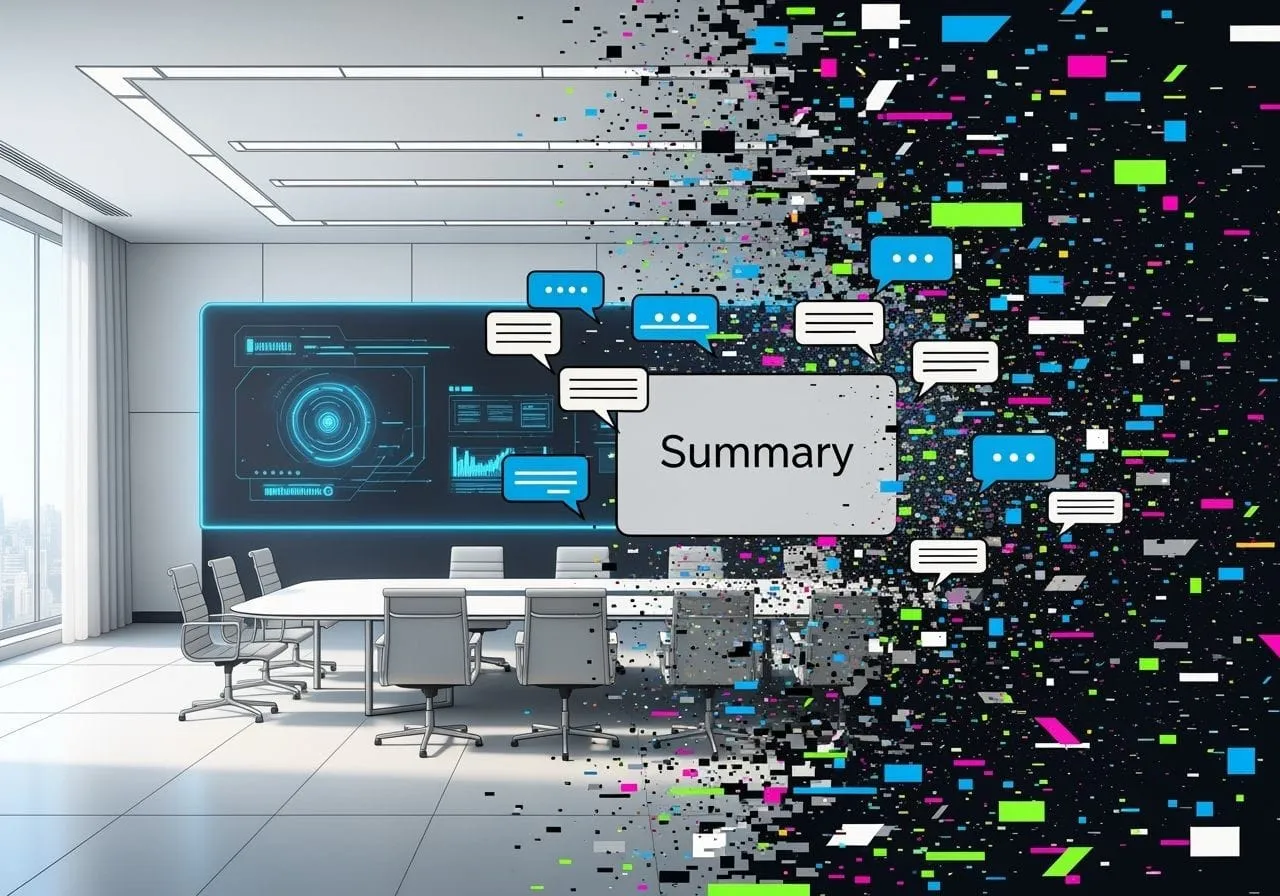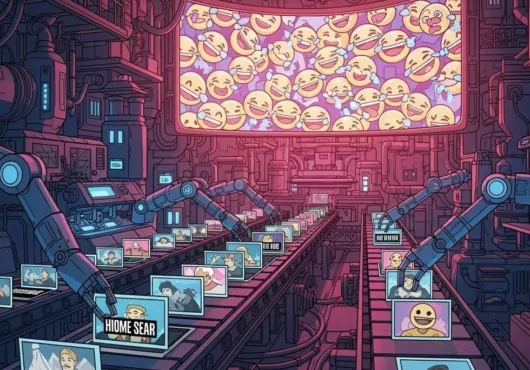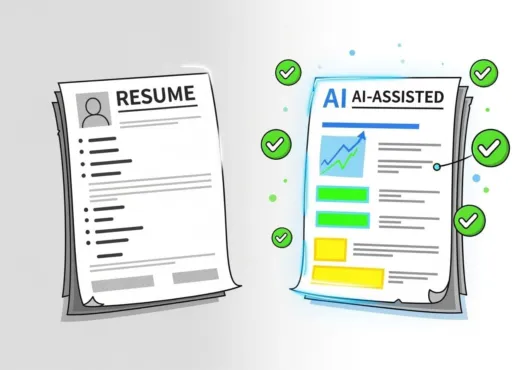“AI tools promise clarity, but they often replace discussion with distance.”
AI promised fewer meetings. Cool. It delivered—calendar carnage. But look at the chalk outline: context, intent, and trust. All three face-down on the carpet while a perky bot says, “Here’s what you missed.”
What we actually built is collaboration theater. Everyone’s “aligned” because an algorithm said so. No one remembers saying yes. No one remembers saying anything.
Like What You Read? Dive Deeper Into AI’s Real Impact.
Keep Reading- AI killed meetings, not miscommunication.
- We traded time for confidence cosplay.
- Tight summaries with missing context, fewer conversations, and decisions nobody actually agreed to.
The Compression Tax
Summaries compress. Compression drops detail. Detail is where meaning lives.
Nuance dies: hedges become certainties, jokes become directives, “let’s explore” becomes “we will ship by Friday.”
Power warps the output: the loudest speaker, the most confident phrasing, or the person with the longest title becomes the “source of truth.”
Tone vanishes: a shrug reads like a signature. A brainstorm reads like a contract.
These tools flatten everything into the same flavor of reasonable-sounding oatmeal. You stare at the recap and think, “Looks fine.” That’s the problem. Fine is where bad decisions breed.
Fewer Meetings, More Ghosts
When the recap is “good enough,” you don’t follow up. You don’t ask dumb-but-crucial questions. You don’t push back. You drift.
Silent dissent: People stop raising issues because they assume “the decision already happened.”
Consensus mirage: A bot’s paragraph stands in for group agreement. No one wanted to argue with a paragraph.
Responsibility blur: “We” decided. Who’s “we”? Exactly.
The team talks less, but misunderstands more. The gaps don’t show up in the recap; they show up in the sprint review.
The Algorithmic Boss’s Boss
Dashboards harvest summaries, then score you on them. Mentions, tasks, tickets, sentiment—pixels pretending to be performance. Now your job is to feed clean inputs to your metrics overlord: tidy tickets, decisive language, zero ambiguity. Meanwhile, the real work—arguing about tradeoffs, negotiating constraints, naming risks—looks messy on a dashboard. So we don’t do it. Or we hide it.
Context Has a Half-Life
AI is great at extracting what was said, terrible at preserving why it mattered.
Origin amnesia: Six weeks later, no one knows the assumptions behind “Option B.” The summary doesn’t store the risk model, only the pick.
Boundary rot: Non-goals and limits get trimmed as “extraneous.” They were the point.
Knowledge drift: Each recap subtly reinterprets the last one until the plan you’re executing is a game of telephone with a project manager from the uncanny valley.
What the Tools Are Good For (If You Stop Worshipping Them)
Getting you a searchable memory of the chaos.
Surfacing contradictions across threads.
Spitting out first-draft notes you can correct like an adult who was actually there.
Use them for recall, not judgment. For retrieval, not authority.
Field Guide: Keep the Humans in the Loop (On Purpose)
Start with a Human Brief (one minute, five bullets): Why now, what outcome, owner, constraints, explicit non-goals. Paste that above the bot summary every time.
Decision Log with Status: Proposed → Decided → Reversed. Link to the moment of dissent. If there’s no dissent link, you don’t have a decision—you have a rumor.
Two Boxes the Bot Can’t Skip: “Unknowns/Risks” and “What We’re Not Doing.” If they’re empty, the meeting didn’t happen; it was a pep talk.
Voice Check Rotation: One rotating human records a 30-second voice note: why we chose this, what could bite us. Tone carries context text can’t.
TTL on Summaries: Expire them after N days unless someone revalidates the assumptions. Stale certainty is worse than no certainty.
No AI on Final Sign-Offs: Human names, human timestamps. The bot can recap, it can’t consent.
The Awkward Truth
Most teams didn’t need less conversation; they needed fewer performative meetings and more decisive thinking. AI did the first and starved the second. It overclocked our worst habits: cargo-cult alignment, shallow agreement, documentation that feels official but isn’t binding on reality.
AI didn’t break your collaboration. It just made your shortcuts really fast.
So keep the tool—ditch the worship. Make space for the messy parts: the friction, the “wait, are we sure?”, the human voice that says, “This summary is lying to us.” That’s not inefficiency. That’s how teams avoid shipping beautifully formatted mistakes.



